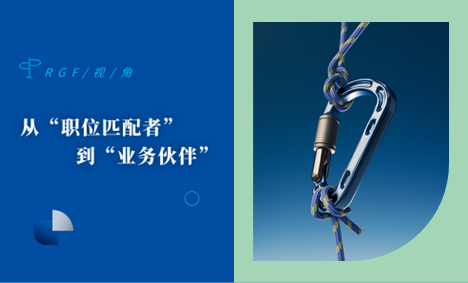In the coded language of the workplace, "transitioning from a vendor to a client role" is often likened to "reaching the shore"—a metaphor suggesting that recruiters, advertisers, and consultants must abandon their service-provider identities to achieve professional fulfillment. Yet amid this trend, Jindi Zhu chose to swap her client-side badge for a vendor-side business card. With a decade of HR experience spanning internet and manufacturing industries, she stepped away from her ascending career as an "in-house HR professional" to dive into the frontline of talent hunting. Now, five years into her role as a recruiter, Jindi reflects: "This might be one of the best decisions I’ve made in my career."
Today, as "joining the client side" becomes the default career aspiration, we explore:
Is a client role truly less risky than a vendor role?
Beyond financial incentives, what makes recruitment—a vendor profession—so compelling?
——Below are insights from Jindi Zhu, Senior Consultant of RGF China’s TMT Team.
Jindi Zhu
Senior Consultant, IT & Digitalization, TMT Team
- Assisted multinational corporations in building IT teams
- Successfully placed roles from mid-level technical positions to senior executives
- Expert in aligning HR needs with candidate expectations
The Client-Side Dilemma: When Comfort Zones Become Barriers
Reflecting on her pre-transition decade, Jindi acknowledges the value of her HR experience in tech and manufacturing but also recalls the frustration of hitting a career ceiling. She identifies three structural challenges common among HR professionals:
i. Narrowing Career Pathways
"Even at the HRVP level, many HR professionals remain confined to specialized domains. Transitioning from cloud-computing recruitment to AI roles, for instance, demands a steep learning curve." Vertical specialization, whether by industry or function, limits career flexibility and resilience.
ii. The Information Bubble
"HRs rely heavily on internal data for talent insights. Evaluating emerging roles often requires external benchmarks, yet cross-industry networking and knowledge-sharing remain scarce."
iii. Stagnant Advancement
"A company with 10,000 employees may have only one HRVP role. During stable growth phases, senior vacancies might not open for years." This visible ceiling pushed Jindi to rethink her trajectory.
"What ultimately drove my decision was a shift in mindset. I once avoided recruitment due to its unpredictability, but after exploring diverse functions, I learned to distinguish between 'incapability' and 'disinterest.' Embracing discomfort became my catalyst for growth."
Evolution Through Challenge: Dual Reconstruction of Client-Side Expertise
"HR expertise is both an asset and a constraint."
Early in her transition, Jindi faced unexpected hurdles. While her HR background enabled her to decode client needs, over-empathy sometimes hindered tough negotiations. Balancing the interests of clients, candidates, and her own principles demanded constant refinement.
Through relentless communication, she discovered her edge: Recruitment is more than salesmanship. Guiding clients through ambiguous hiring needs, offering strategic solutions, and leveraging industry insights became her winning formula.
Redefining Value: The Unique Appeal of Recruitment
Jindi shares a case study: A multinational firm sought an IT leader for a niche project with tight budgets and legacy organizational challenges. After exhausting conventional channels, she expanded her search to adjacent industries, prioritizing candidates’ problem-solving logic over direct experience. The successful placement underscored her approach:
"Such complex hires demand cross-industry vision and adaptability—skills honed through recruitment. Beyond financial rewards, engaging with top-tier talent and understanding their career journeys has enriched my professional and personal growth in ways an in-house role never could."
Beyond Labels: Core Competencies for Talent Experts
Jindi’s journey highlights key trends in modern careers:
1. Converging Risks
- Client-side HRs face instability from organizational shifts
- Recruiters navigate market volatility and performance pressures
2. Overlapping Skills
- Top HRs need recruiter-level market insight
- Elite recruiters require HR-level organizational diagnostics
3. The Ultimate Test of Self-Drive
"Recruitment demands entrepreneurial autonomy—from strategizing talent searches to influencing client expectations. The self-discipline and risk-bearing mindset mirror starting a business."
"Career success lies in aligning capability with value." Jindi’s five-year journey proves that mastery of talent dynamics transforms client/vendor labels into fluid identities, not rigid boundaries.
For IT/digitalization career opportunities or hiring needs, contact: jindi.zhu@rgf-professional.com.cn
Explore limitless potential with Jindi.






